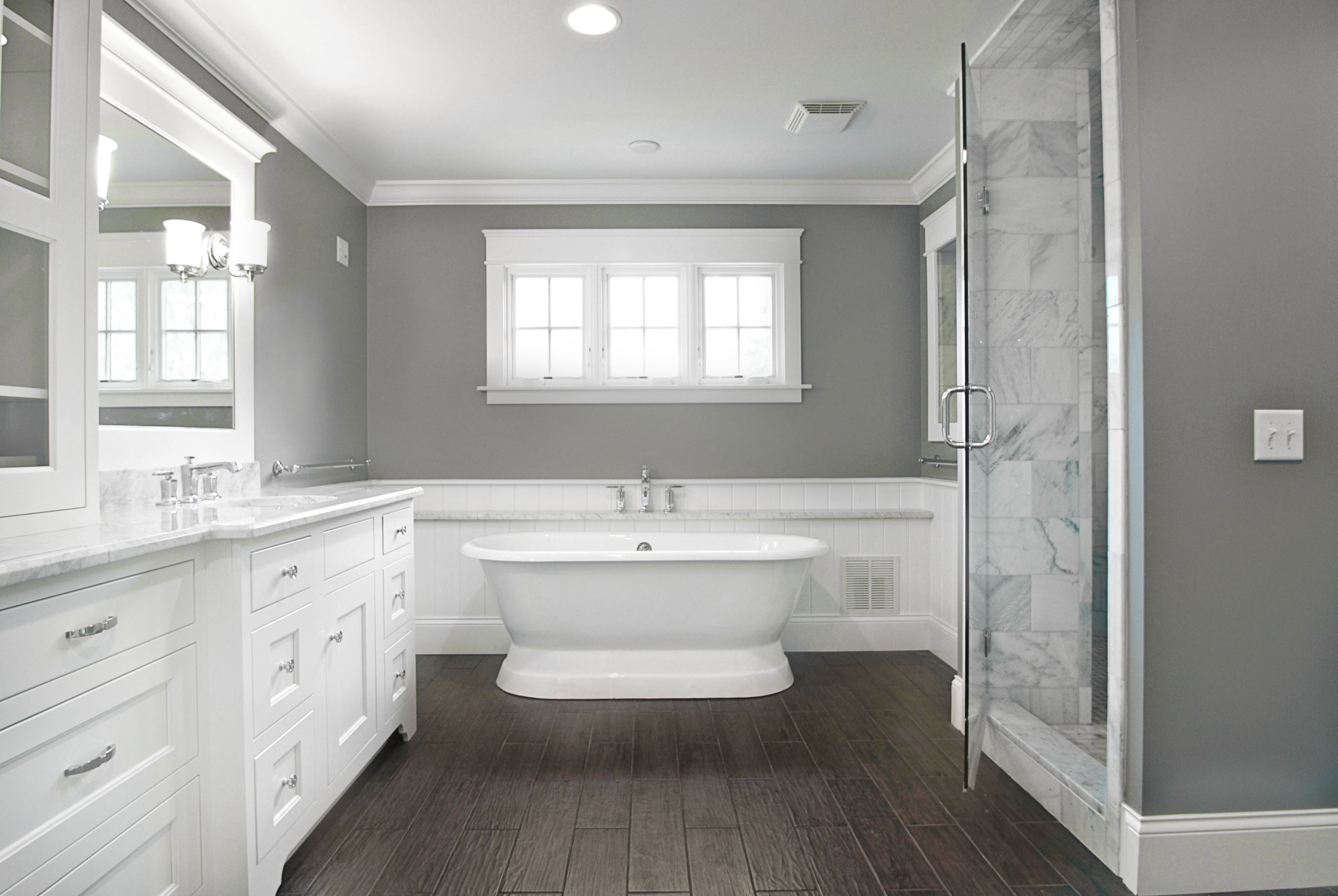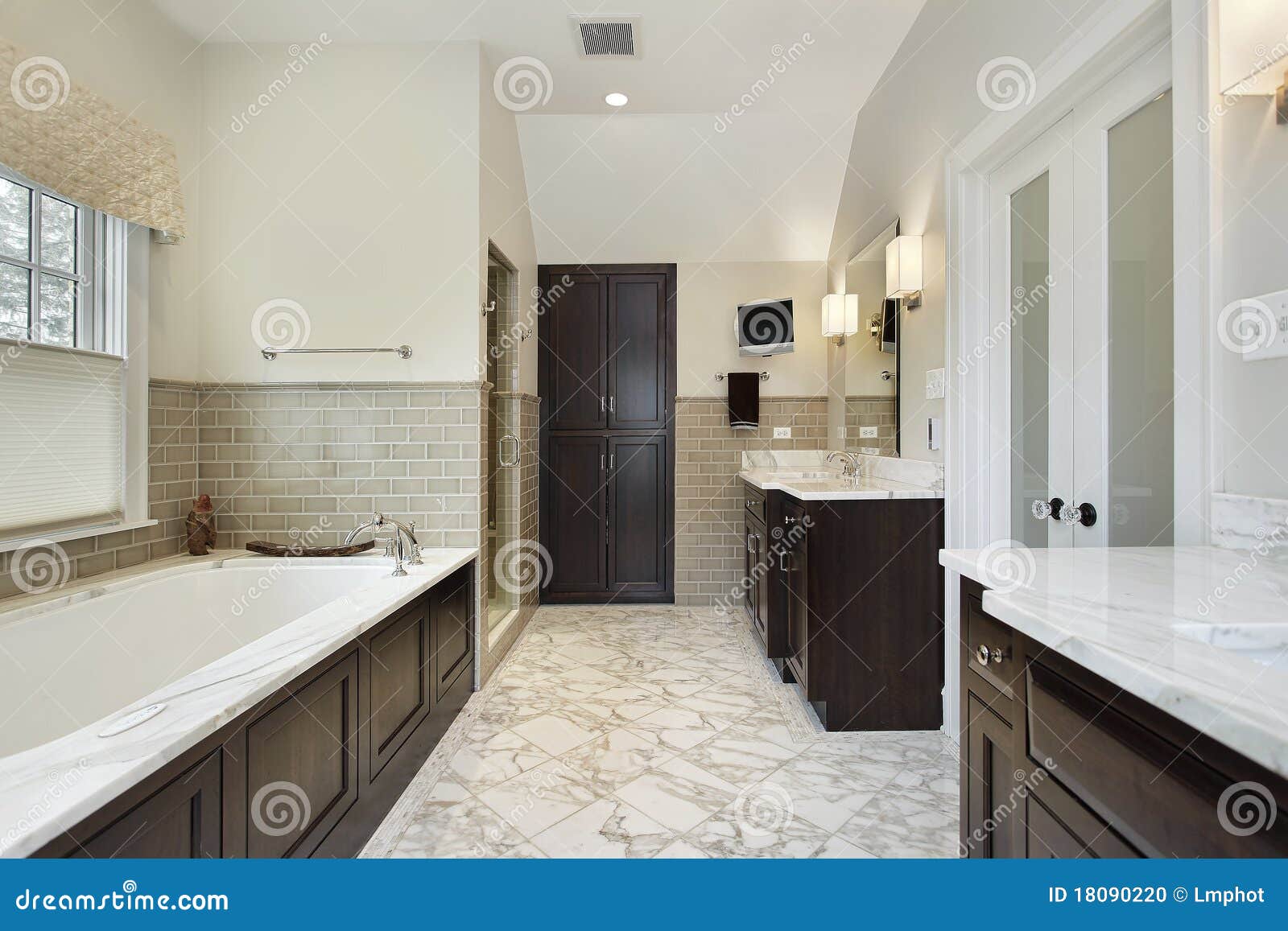The Allure of Dark Floors in Bathrooms

In the realm of interior design, the choice of flooring plays a pivotal role in shaping the overall aesthetic and ambiance of a space. While light-colored floors are often favored for their ability to brighten and enlarge a room, dark floors possess an undeniable allure, particularly in bathrooms, where they exude sophistication, luxury, and a sense of tranquility.
Psychological Impact of Dark Floors in Bathrooms, Dark floor bathroom designs
Dark floors, characterized by their rich hues and deep tones, evoke a sense of sophistication and elegance. The psychological impact of these floors is multifaceted, creating a calming and luxurious atmosphere. The darker shades create a sense of grounding, providing a stable and secure backdrop for the rest of the bathroom design. This grounding effect can be particularly beneficial in a space that is often associated with relaxation and rejuvenation.
Dark Floors in Various Bathroom Styles
The use of dark floors transcends various bathroom styles, seamlessly integrating into modern, contemporary, industrial, and traditional aesthetics.
Modern Bathrooms
In modern bathrooms, dark floors often serve as a bold statement, complementing sleek lines, minimalist fixtures, and clean-cut designs. The dark tones create a sense of contrast and depth, highlighting the architectural features of the space.
Contemporary Bathrooms
Contemporary bathrooms, known for their emphasis on functionality and simplicity, embrace dark floors as a way to create a sophisticated and inviting atmosphere. The dark tones often serve as a backdrop for natural light, enhancing the overall brightness of the space.
Industrial Bathrooms
Industrial bathrooms, inspired by the raw and utilitarian aesthetic of factories and warehouses, often feature dark floors made from materials like concrete or reclaimed wood. These floors contribute to the rugged and industrial feel of the space, adding a touch of authenticity and character.
Traditional Bathrooms
In traditional bathrooms, dark floors can create a sense of warmth and elegance. Rich wood tones, such as mahogany or walnut, are commonly used, adding a touch of classic charm to the space.
Dark Floors in Small Bathroom Spaces
Dark floors can be particularly effective in small bathroom spaces, where they can create a sense of depth and visual interest. By drawing the eye downward, dark floors can make a small bathroom appear larger and more spacious. The dark tones can also help to conceal dirt and grime, making the bathroom easier to maintain.
Choosing the Right Dark Floor Material: Dark Floor Bathroom Designs

Dark floor bathroom designs – Dark floors can dramatically alter the ambiance of a bathroom, adding depth, sophistication, and a touch of drama. However, choosing the right dark floor material is crucial to achieving the desired look and ensuring longevity. Each material boasts its own set of advantages and disadvantages, and the ideal choice depends on the bathroom’s style, size, budget, and personal preferences.
Comparing Dark Floor Materials
To make an informed decision, it’s essential to understand the characteristics of popular dark floor materials for bathrooms. This comparison table highlights the key factors of durability, maintenance requirements, and cost for each material.
| Material | Durability | Maintenance | Cost |
|---|---|---|---|
| Tile | Highly durable, resistant to scratches, stains, and water damage. | Requires regular cleaning with a mild detergent and occasional sealing. | Wide range, from affordable to high-end, depending on the type and quality. |
| Wood | Durable with proper care, but susceptible to water damage if not properly sealed. | Requires regular cleaning and refinishing, depending on the type of wood. | Moderately expensive, with prices varying depending on the wood species and finish. |
| Concrete | Highly durable, resistant to scratches and stains, and can be easily repaired. | Requires sealing to prevent staining and regular cleaning with a mild detergent. | Relatively affordable, with costs varying depending on the complexity of the design and installation. |
Selecting the Right Dark Floor Material
Choosing the right dark floor material is a multifaceted decision, influenced by various factors. Here’s a detailed guide to help you make the best choice for your bathroom:
Bathroom Size
For smaller bathrooms, lighter colors tend to create an illusion of space. However, dark floors can still work in smaller bathrooms if used strategically. Using large format tiles, for example, can visually expand the space. In larger bathrooms, dark floors can anchor the space and create a sense of intimacy.
Bathroom Style
Dark floors can complement a wide range of bathroom styles. For a contemporary or minimalist bathroom, sleek dark tiles or polished concrete floors are excellent choices. For a traditional bathroom, dark wood floors can add warmth and character. For a rustic bathroom, reclaimed wood or textured concrete floors can create a natural and earthy feel.
Budget
The cost of dark floor materials varies greatly depending on the type and quality. Tile can be an affordable option, while wood and concrete can be more expensive. Consider your budget and prioritize the features that are most important to you. For example, if durability is your primary concern, tile or concrete might be better options than wood.
Maintenance
Dark floors show dirt and grime more readily than lighter floors. This means that dark floors require more frequent cleaning. However, some materials, such as tile and concrete, are easier to clean than others. Consider your lifestyle and how much time you are willing to devote to maintenance when choosing a dark floor material.
Personal Preferences
Ultimately, the best dark floor material for your bathroom is the one that you love. Consider the overall design aesthetic of your bathroom and choose a material that complements your personal style. If you prefer a classic and timeless look, wood might be a good choice. If you prefer a modern and industrial look, concrete might be a better option. Remember to visit showrooms and compare different materials in person to get a better feel for their look and feel.
Complementary Design Elements

Dark floors can be a striking feature in a bathroom, but to create a truly harmonious space, it’s essential to consider the complementary design elements that will balance the darkness and enhance the overall aesthetic.
The key to achieving a visually appealing bathroom with dark floors is to play with contrasts. By incorporating light colors, textures, and accents, you can create a sense of depth, dimension, and visual interest.
Wall Colors
Light and bright wall colors provide a stark contrast to dark floors, creating a sense of spaciousness and airiness.
- White: A classic choice, white walls create a clean and crisp backdrop that allows the dark floors to take center stage. White reflects light, making the space feel brighter and more open.
- Cream: A warmer alternative to white, cream walls offer a softer and more inviting ambiance. It complements dark floors beautifully, creating a sophisticated and calming atmosphere.
- Light Gray: A versatile and modern choice, light gray walls offer a subtle contrast to dark floors while adding a touch of elegance. It creates a clean and contemporary look that complements a wide range of bathroom styles.
- Pale Blue: A calming and refreshing color, pale blue walls can create a spa-like atmosphere in the bathroom. It pairs well with dark floors, adding a touch of serenity and tranquility.
Accent Pieces
Strategic placement of accent pieces in contrasting colors and textures can elevate the bathroom design and create a sense of visual interest.
- Metallic Accents: Gold, silver, or brass accents add a touch of luxury and sophistication to a bathroom with dark floors. These accents can be incorporated through fixtures, towel bars, or decorative elements.
- Natural Elements: Wood, stone, or bamboo accents introduce warmth and texture, creating a balanced contrast to the darkness of the floor. Consider incorporating these elements through vanity tops, shelves, or decorative pieces.
- Bright Towels and Rugs: A splash of color can be introduced through towels and rugs in vibrant hues that complement the dark floors. Choose colors that contrast with the wall color for a more impactful visual effect.
